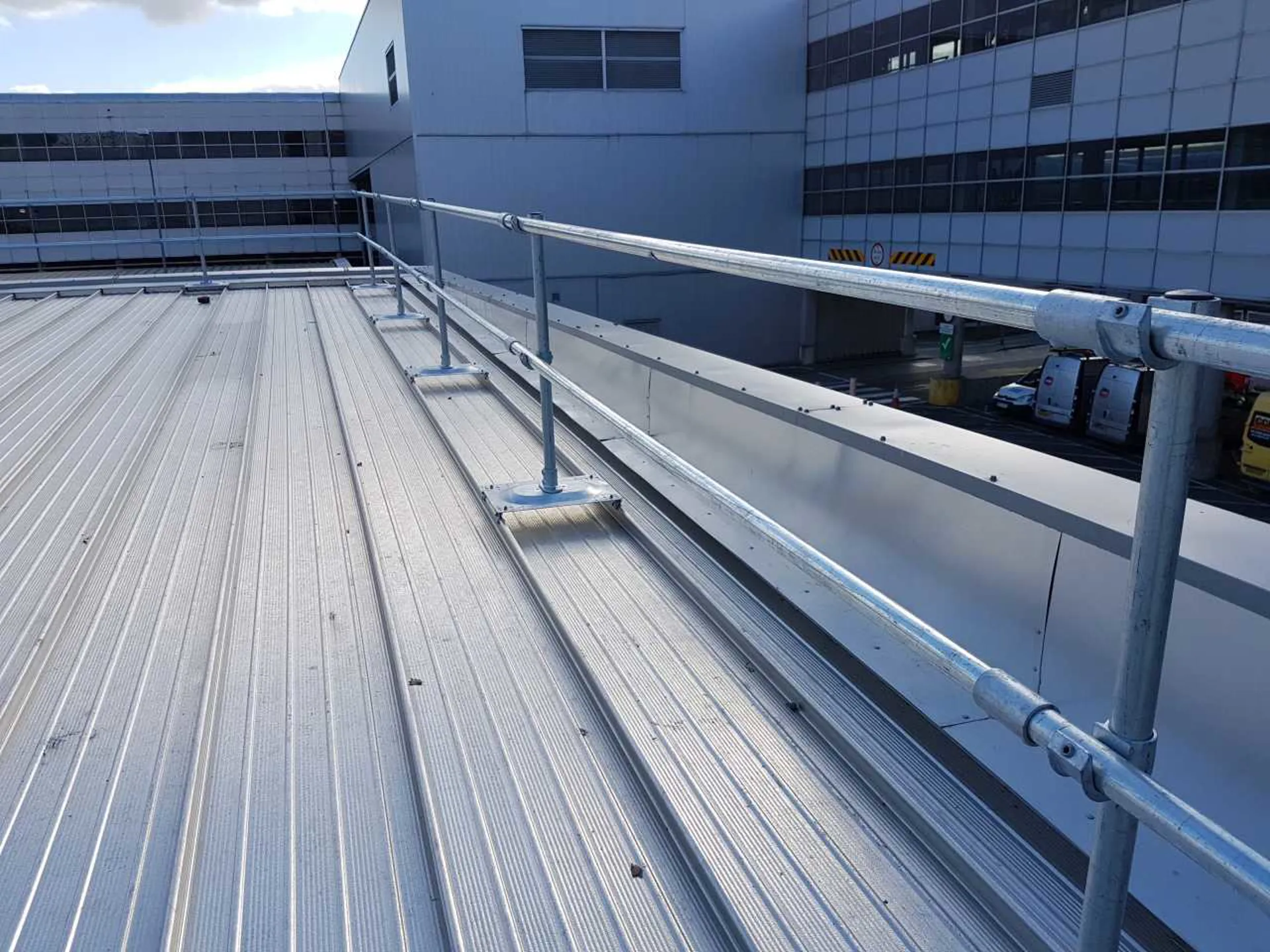
You are visiting the Singapore Kee Safety website from United States. Would you like to go to the United States site?

Are you unsure whether to install a permanent or temporary guardrail system for your facility? It's a common decision for safety managers and facility operators across the Asia-Pacific region, especially as regulations for working at heights become more stringent. Both types of guardrail systems play a crucial role in preventing falls and improving safe access solutions for workers.
Both options can meet regional safety standards, such as those set by Singapore’s MOM, Malaysia’s DOSH, or Australia’s WHS regulations etc., but they serve different operational needs. Whether you're managing a manufacturing, logistics, transport, oil and gas or data centre Facility, the choice between modular handrails and roof guardrails can significantly impact your site's safety, efficiency, and long-term costs.
In this blog, we’ll explore the key differences between permanent and temporary safety railings and help you choose the right edge protection system that aligns with your facility’s risk profile, usage frequency, and regional compliance requirements.

Global safety standards for working at heights typically require fall protection measures when employees are exposed to height risks, often from 2 metres and above in general industry and construction. One of the most effective forms of protection is a compliant guardrail system, generally installed at a height of around 1 metre (or approximately 42 inches), to serve as a secure edge protection system.
Whether you choose a permanent or temporary guardrail system, ensuring compliance with national regulations and industry best practices is essential for maintaining a safe work environment.
Before diving into which system is right for your facility, it's important to understand the difference between the two:

Permanent guardrail systems are a long-term solution for ensuring rooftop fall protection and safe access in high-risk areas. Commonly used in manufacturing plants, logistics hubs, and Industrial rooftops, these engineered safety solutions offer reliable, round-the-clock protection.
Pros of Permanent Guardrails:
Cons of Permanent Guardrails:
Note: Some permanent guardrail systems—like Kee Guard®—can be configured as demountable railings, offering the strength of a fixed solution with the flexibility of removal or repositioning when required. This makes them an ideal hybrid option for Data Centre facilities that value both safety and adaptability. Nowadays, more industrial sectors are opting for demountable railings for their facilities.

Temporary guardrail systems provide adaptable fall protection for worksites where conditions or access requirements change frequently. These systems are widely used in construction projects, maintenance work, or during short-term rooftop activities where modular handrails and mobility are key.
Pros of Temporary Guardrails:
Cons of Temporary Guardrails:

Selecting between a permanent or temporary guardrail system depends on your facility’s operational needs, safety requirements, and budget. Each system serves a distinct purpose and offers unique benefits.
Key Factors to Consider:

At Kee Safety, we’re dedicated to delivering high-quality, compliant, and reliable fall protection systems tailored to your facility’s specific needs. Whether you require a permanent rooftop guardrail installation for continuous access or a Demountable railing solution for a time-bound project, we offer the right products and the technical expertise to keep your people safe.
Choosing the right system starts with a proper assessment. Consulting with a qualified fall protection specialist ensures that your solution meets regional safety standards, aligns with your operational requirements, and provides the highest level of protection for your workforce.

Please fill in your details below and we’ll be in touch shortly.